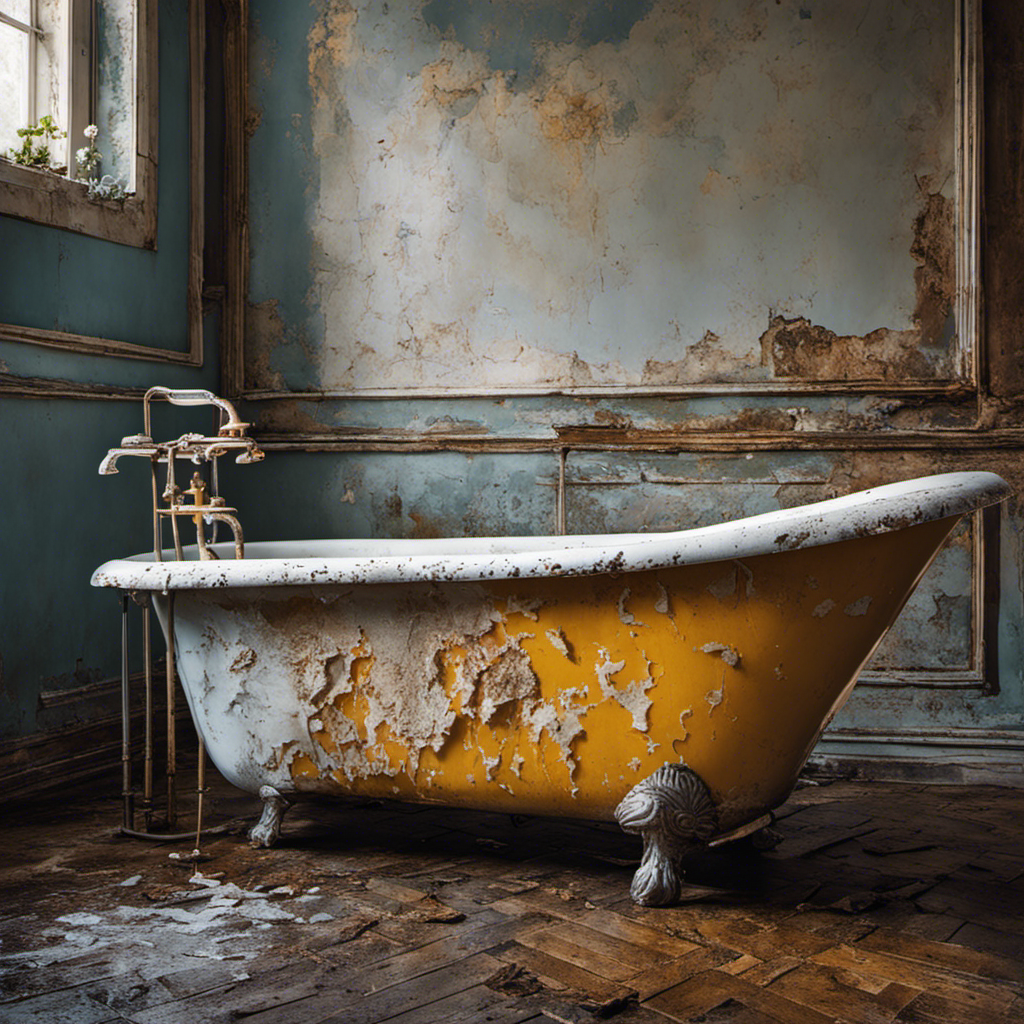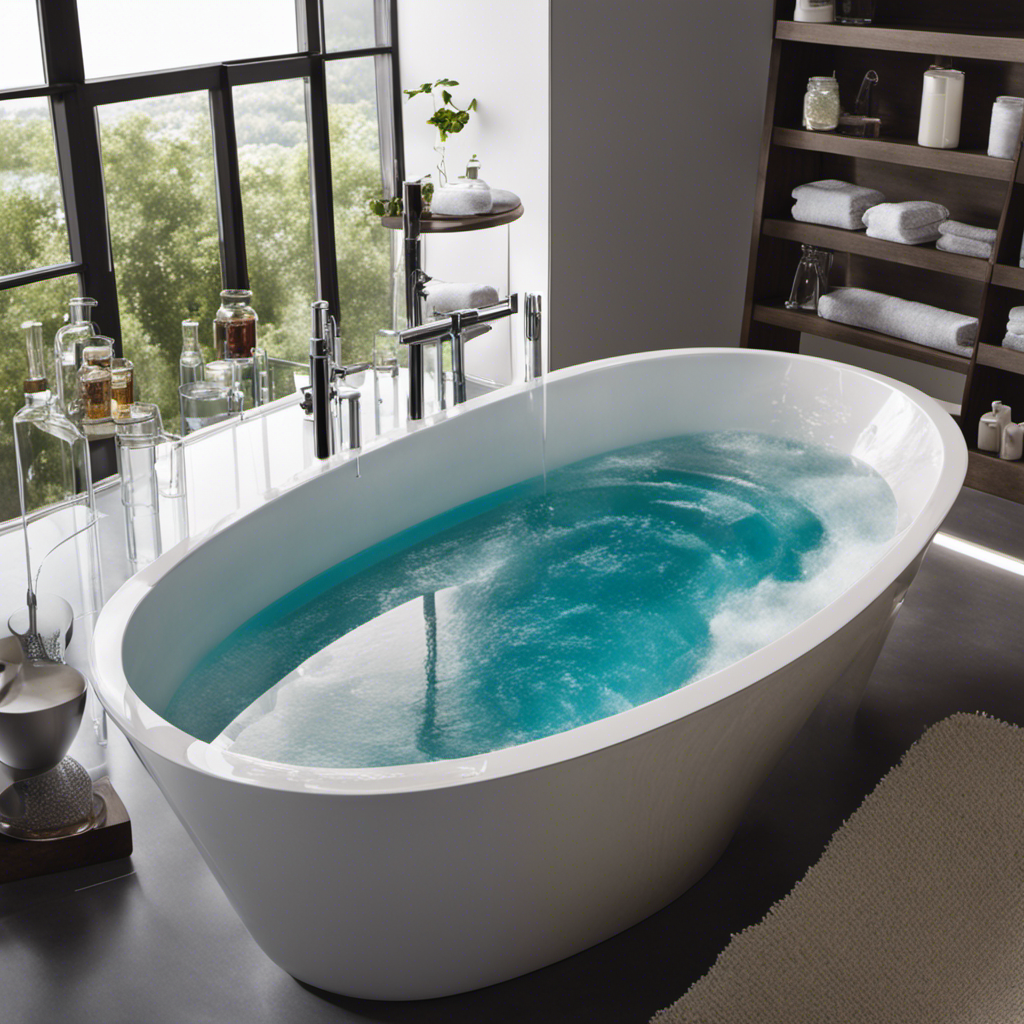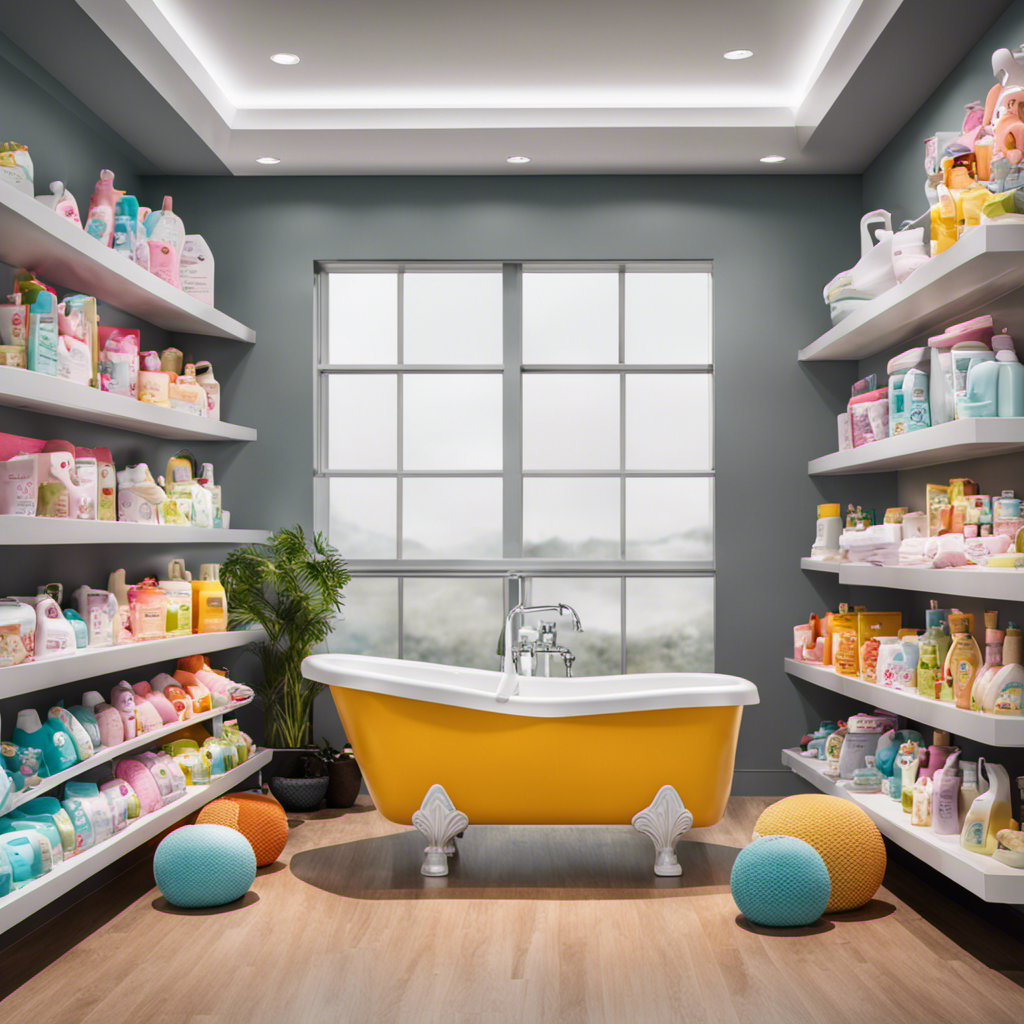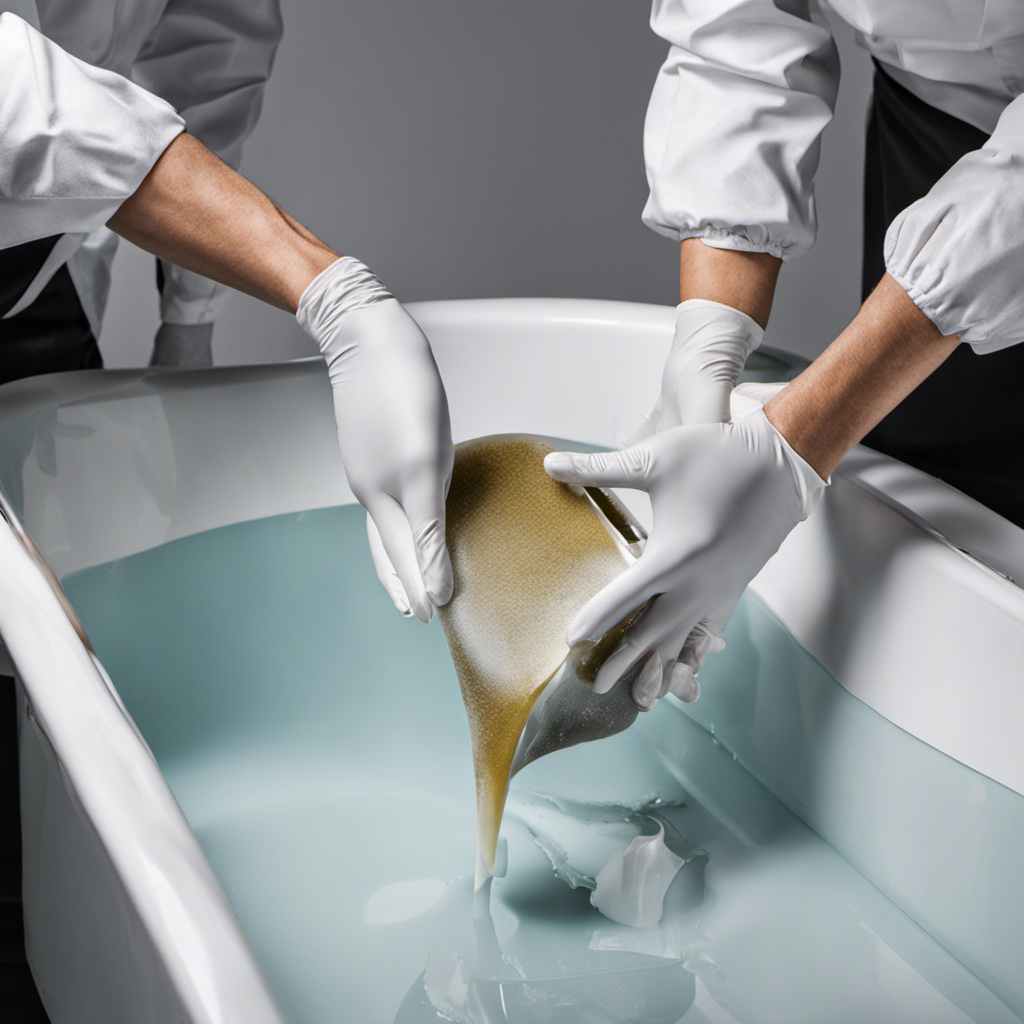As a homeowner, I’ve experienced the frustration of discovering peeling paint in my bathtub. It’s like watching a delicate flower lose its petals, but instead of beauty, I’m left with an unsightly mess. So, why does this happen?
In this article, we’ll explore the common causes of bathtub paint peeling, from moisture’s impact to chemical reactions and improper surface preparation.
I’ll also share maintenance tips to help you prevent this pesky problem from rearing its ugly head again.
Key Takeaways
- Excessive moisture in the bathroom weakens and causes paint to peel.
- Harsh cleaning products containing chemicals can break down the paint.
- Improper surface preparation leads to poor adhesion and peeling.
- Regular cleaning, drying, and prompt addressing of any signs of peeling or damage can help prevent bathtub paint peeling.
Common Causes of Bathtub Paint Peeling
One of the most common causes of bathtub paint peeling is excessive moisture in the bathroom. When there is a constant presence of moisture, it can seep into the layers of paint, causing it to weaken and eventually peel off.
Another cause of bathtub paint peeling is the use of harsh cleaning products that contain chemicals that can break down the paint over time.
Additionally, if the surface of the bathtub was not properly prepared before the paint was applied, it can lead to poor adhesion and eventual peeling.
Signs of bathtub paint deterioration include discoloration, bubbling, cracking, and flaking.
It is important to address these issues promptly to prevent further damage and maintain the appearance of your bathtub.
Impact of Moisture on Bathtub Paint
To prevent moisture from causing peeling, you should regularly use a bathroom fan or open a window while showering. Humidity can have a significant impact on the condition of your bathtub paint. Here’s how it works:
-
High humidity levels: Excess moisture in the air can seep into the paint, causing it to soften and lose its adhesion to the surface. This leads to peeling and flaking.
-
Condensation: When warm, moist air comes into contact with cooler surfaces, it can condense and form droplets of water. This constant exposure to water droplets can weaken the paint and eventually cause it to peel.
-
Temperature changes: Extreme variations in temperature, such as hot showers followed by cold bathroom conditions, can also contribute to paint peeling. These rapid changes can cause the paint to expand and contract, leading to cracking and peeling.
Chemical Reactions and Bathtub Paint Peeling
If you don’t control chemical reactions properly, it can lead to the peeling of your bathtub paint. Chemical reactions can have a significant impact on the longevity of your bathtub paint. Two key factors to consider are the effects of temperature and the role of cleaning products. Temperature fluctuations can cause the paint to expand and contract, leading to cracks and eventually peeling. Using cleaning products that are too harsh or abrasive can also damage the paint and weaken its adhesion to the surface. To better understand these effects, take a look at the table below:
| Effects of Temperature | Role of Cleaning Products |
|---|---|
| High temperatures can cause the paint to expand and contract, leading to cracks and peeling. | Harsh or abrasive cleaning products can strip away the protective layers of paint, causing it to deteriorate and peel. |
| Extreme cold can cause the paint to become brittle and more prone to cracking and peeling. | Chemicals in certain cleaning products can react with the paint, causing it to break down and deteriorate over time. |
| Rapid temperature changes can further stress the paint, increasing the likelihood of peeling. | Frequent use of strong cleaning agents can weaken the paint’s adhesion to the surface, making it more susceptible to peeling. |
Understanding the effects of temperature and the role of cleaning products can help you take the necessary precautions to prevent bathtub paint peeling. However, there is another important factor to consider – improper surface preparation. This will be discussed in the next section.
Improper Surface Preparation and Bathtub Paint Peeling
Make sure you properly prepare the surface before applying any new paint to your bathtub to prevent peeling. Surface preparation is of utmost importance when it comes to ensuring the longevity and durability of your bathtub paint.
Here are three key steps to follow for effective surface preparation:
-
Clean the surface: Remove any dirt, grime, or soap scum from the bathtub surface using a mild detergent or cleaner. Rinse thoroughly and allow it to dry completely before proceeding.
-
Sand the surface: Lightly sand the bathtub surface using fine-grit sandpaper to create a rough texture that will help the new paint adhere properly. Be sure to remove any loose or flaking paint during this process.
-
Prime the surface: Apply a high-quality primer specifically designed for bathtub surfaces. This will create a strong bond between the surface and the new paint, preventing peeling and ensuring a smooth, even finish.
When it comes to choosing the right type of bathtub paint, there are various options available, such as epoxy, acrylic, and enamel paints. Each type has its own unique properties, durability, and application methods. Consider factors like moisture resistance, durability, and ease of cleaning when selecting the most suitable paint for your bathtub.
Maintenance Tips to Prevent Bathtub Paint Peeling
Regularly cleaning and drying your bathtub surface can help prevent the paint from peeling. Taking care of your bathtub surface is essential to avoid paint issues. Use gentle cleaners specifically formulated for bathtubs to avoid damaging the paint. Avoid using abrasive scrubbers or brushes that can scratch the surface and compromise the paint layer. If you notice any signs of peeling or damage, address the issue promptly. Bathtub paint removal can be a complex task, so consult a professional if needed. Consider using epoxy or enamel coatings as an alternative to bathtub paint. These coatings are designed to withstand moisture and provide a durable finish.
Conclusion
In conclusion, the peeling of bathtub paint can be caused by various factors such as moisture, chemical reactions, and improper surface preparation.
However, by following proper maintenance tips, you can prevent this issue from occurring.
Some may argue that repainting a bathtub is a hassle, but with the right knowledge and techniques, it can be a rewarding and cost-effective solution.
By taking the time to address the underlying causes and properly maintain your bathtub, you can enjoy a beautiful and long-lasting paint job.









